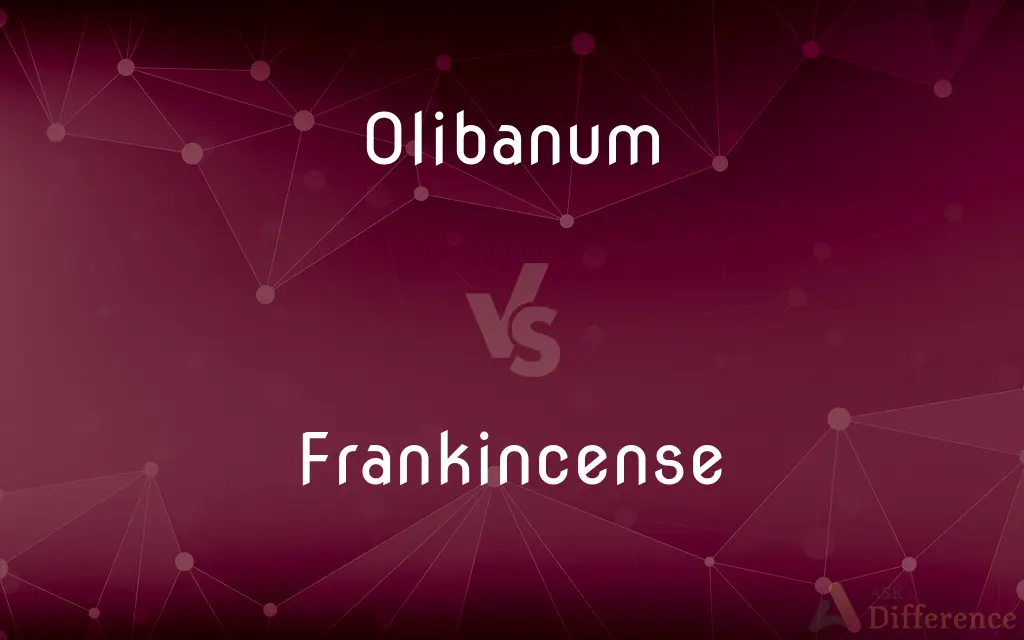Olibanum vs. Frankincense — What's the Difference?

Difference Between Olibanum and Frankincense
ADVERTISEMENT
Compare with Definitions
Olibanum
Frankincense.
Frankincense
Frankincense (also known as olibanum) is an aromatic resin used in incense and perfumes, obtained from trees of the genus Boswellia in the family Burseraceae. The word is from Old French franc encens ('high-quality incense').There are several species of Boswellia that produce true frankincense: Boswellia sacra (syn.
Olibanum
A gum resin from trees of the genus Boswellia, formerly used as a medicine and now mainly as incense.
Frankincense
An aromatic gum resin obtained from African and Asian trees of the genus Boswellia, used as incense and in perfumes.
Olibanum
The fragrant gum resin of various species of Boswellia; Oriental frankincense.
ADVERTISEMENT
Frankincense
A type of incense obtained from the Boswellia thurifera tree.
Olibanum
An aromatic gum resin obtained from various Arabian or East African trees; formerly valued for worship and for embalming and fumigation
Frankincense
A fragrant, aromatic resin, or gum resin, burned as an incense in religious rites or for medicinal fumigation. The best kinds now come from East Indian trees, of the genus Boswellia; a commoner sort, from the Norway spruce (Abies excelsa) and other coniferous trees. The frankincense of the ancient Jews is still unidentified.
Frankincense
An aromatic gum resin obtained from various Arabian or East African trees; formerly valued for worship and for embalming and fumigation
Share Your Discovery

Previous Comparison
Values vs. Standards
Next Comparison
Ethnocentrism vs. Xenocentrism













































